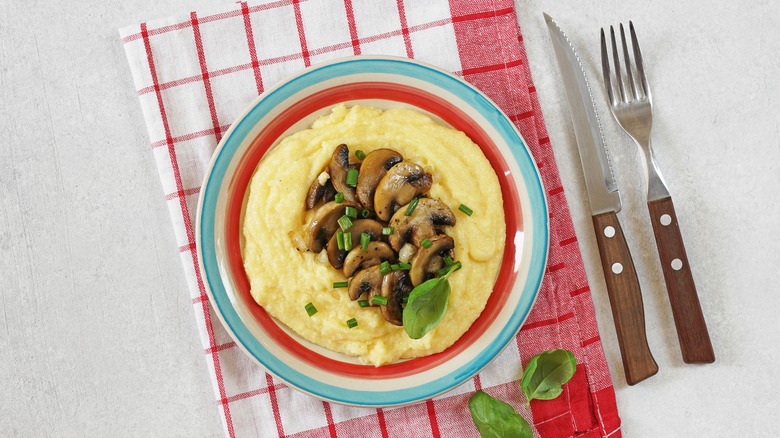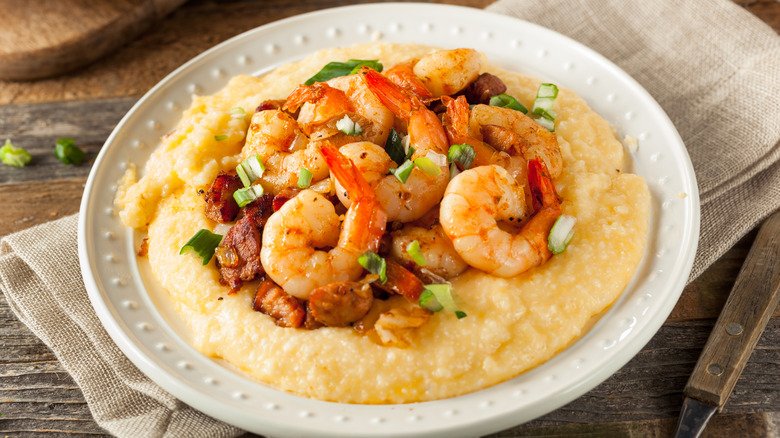The Biggest Mistake You're Making When Thickening Grits
Beloved throughout the American South, grits are a remarkably versatile dish that can serve as a breakfast side or full meal that can be eaten plain or decked out with spices and seafood. According to The Charleston Mercury, the dish originated from Native American cuisine. Grits are derived from a dish called "rockahomine" or "hominy," traditionally eaten by the Muskogee tribe. Now, grits are incorporated into classic southern recipes like shrimp and grits, which originated with the Gullah Geechee people.
In theory, grits aren't hard to make: just simmer them with some milk and water, right? Unfortunately, it's not that simple. In fact, grits are tricky to perfect. They require a lot of attention and it can be difficult to get the liquid-to-grits right. Even if you're using stone-ground grits instead of the notoriously flavorless instant kind, the dish can easily turn out runny or lumpy if you're not careful.
So, what should you do about runny grits? Adding more grits seems like the most intuitive solution to the problem, but it's actually a big mistake. Foodsguy explains that since the original grits have already been cooking for a while, new grits will cook unevenly. Avoid using cornstarch to thicken grits, too. Cornstarch doesn't do a great job of thickening the mixture and it will make the final product bland and flavorless.
How should you actually thicken grits?
First, you should make sure that the grits are, in fact, too runny. If you've never cooked grits before, you may not realize that, like polenta, they tend to set up once you take them off the stove, especially if you've added a lot of butter. Another option is to recook the grits. According to Bon Appétit, the grits won't suffer from a longer cooking time. While some grains develop an unpleasant mushy texture when they're cooked for too long, grits just get smoother and creamier over time.
Adding an egg is another option. Foodsguy recommends beating an egg in a medium-sized bowl until it's thoroughly combined, then stirring a small portion of cooked grits into the bowl. Be careful — adding too much will cook your eggs. Keep adding grits to the egg mixture until the grits and egg are thoroughly combined then return the grits to the stove.
You can also try straining the mixture. Placing a paper coffee filter in a mesh strainer and pouring the grits through can help get rid of excess water. This process can be messy, though, so remember to be careful when handling hot grits. Of course, learning the right way to cook grits will prevent mistakes in the future, but remember that the best way to learn is through trial and error.

